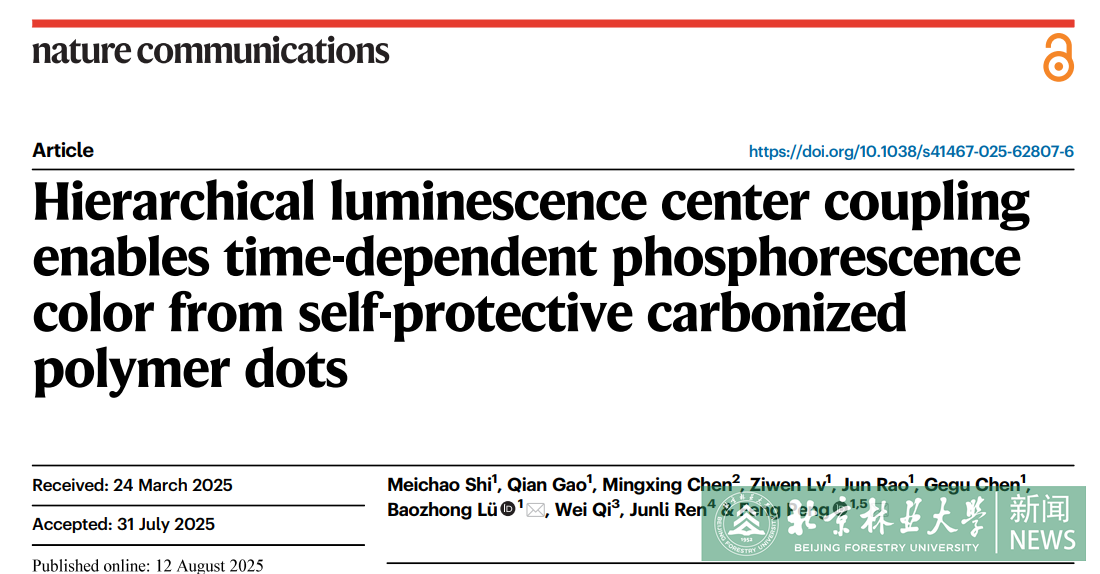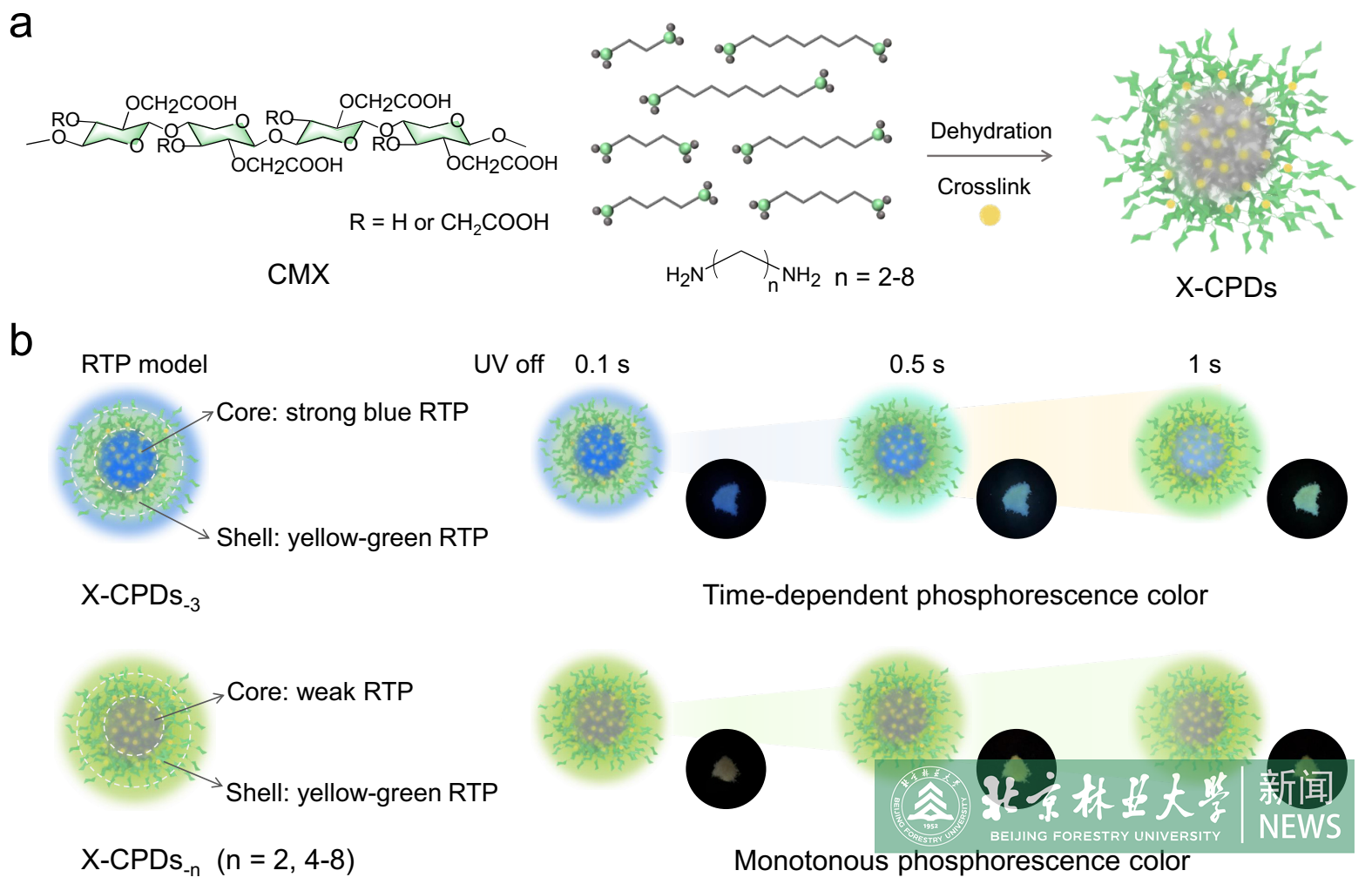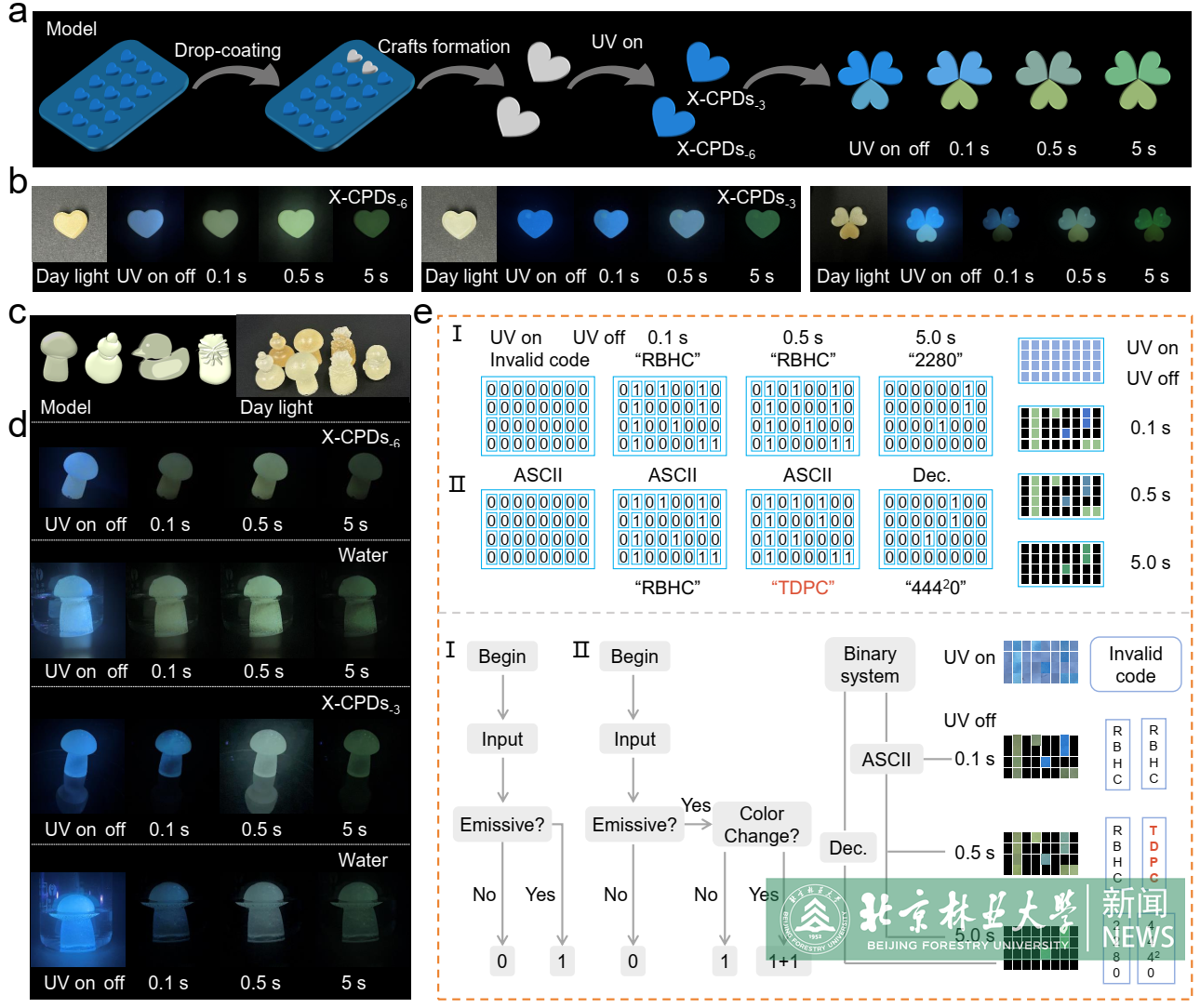Latest news
A research team led by Professor Peng Feng from the College of Materials Science and Technology has achieved significant advances in the development of time-dependent phosphorescence color (TDPC) materials using xylan-based carbonized polymer dots (X-CPDs). Their latest study, entitled "Hierarchical luminescence center coupling enables time-dependent phosphorescence color from self-protective carbonized polymer dots", has been published in Nature Communications.

Time-dependent phosphorescence color is attractive for various applications; however, the modulation mechanism of multiple luminescence centers is still confused. Herein, we proposed a hierarchical luminescence center coupling strategy to develop self-protective xylan carbonized polymer dots with time-dependent phosphorescence color. When using 1,3-diaminopropane as the cross-linker, the polymer dots feature a highly stable and rigid architecture, the clusterization-triggered phosphorescence of which is fully exploited to form hierarchical core−shell phosphorescence centers with different afterglow colors. The core with blue afterglow is dominant at first, and the shell with yellow-green afterglow becomes dominant over time, leading to a typical time-dependent phosphorescence color evolution with large color contrast. The eco-friendly xylan carbonized polymer dots with high contrast time-dependent phosphorescence color can be used for advanced dynamic information encryption and anti-counterfeiting. This work provides an effective method to achieve time-dependent phosphorescence color, and gives insights into the phosphorescence mechanism of carbonized polymer dots.


Doctoral student Shi Meichao is the first author of the paper, with Associate Professor Lü Baozhong and Professor Peng Feng serving as corresponding authors. Beijing Forestry University is the affiliated institution of the first author.
This work was supported by the National Science Fund for Distinguished Young Scholars of China (32225034) (P.F.), the National Natural Science Foundation of China (22308028) (L.B.), the Fundamental Research Funds for the Central Universities (JCYJ202501) (L.B.), the National Key Research and Development Program of China (NO. 2024YFD2200804) (L.B.), the Young Elite Scientists Sponsorship Program by CAST (YESS20240208) (L.B.).
Paper link: https://www.nature.com/articles/s41467-025-62807-6
Written by Lü Baozhong, Peng Feng
Translated and edited by Song He
Reviewed by Yu Yangyang












